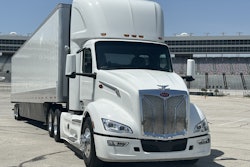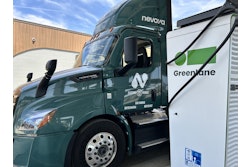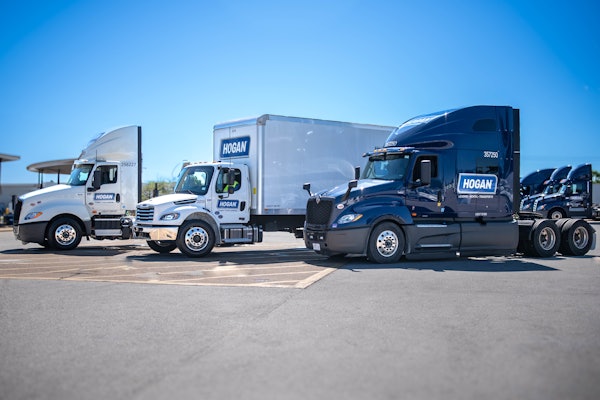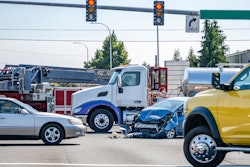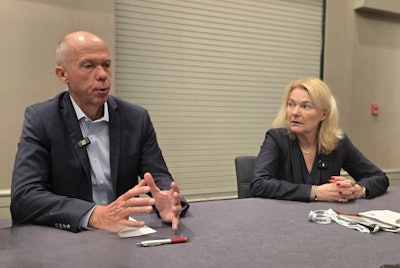
Battery-electric vehicles are already a tough sell in the passenger car market. In commercial trucking applications, the idea is (mostly) a non-starter. In the cases where the technology currently makes sense, BEVs are relegated to a few niche applications such as package delivery and urban routes. In Class 8 operations, drayage and limited dedicated operations stand alone as opportunities for early adopter success.
International Motors has taken a decidedly measured approach to battery electric deployment. In April, the company became the last North American truck OEM to introduce a BEV for the heavy-duty market. But the Lisle, Ill.-based truck maker sees heavy-duty BEVs as a market yet to happen, and one that won’t hit a tipping point until the total cost of ownership equation can be solved for fleets.
“When we look into the future where there's a TCO point that comes, of course the cost structure that needs to come down on the product,” said Mathias Carlbaum, president and CEO of International. But technology progress is steadily being made, he added. “If you see what we see are today with battery cells compared to five years ago, one only can only guess where there will be in another five years.”
International’s parent company Traton, which also owns European brands Scania, MAN and Volkswagen Truck & Bus, already has broader development of BEVs in the European market, where strict regulations will require OEMs to reduce carbon dioxide emissions by 45 percent by 2045. Additionally, 35 percent of heavy-duty vehicles sold must be electric beginning in 2030.
“To be able to do that with the low volumes that we have right now, we need to continue to bring products to the market to be able to comply with the European legislation,” said Catharina Modahl Nilsson, member of the executive board of Traton SE, group product management. Traton builds product for global platforms as part of its Traton Modular System approach with shared chassis and vehicle architectures across its truck brands.
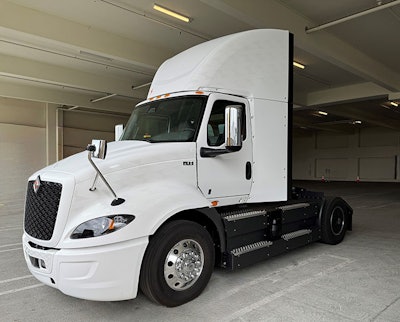 The International eRH Series joins the eMV medium duty truck in International's zero emission lineup. Series production of the eRH will kick off in the first half of next year.
The International eRH Series joins the eMV medium duty truck in International's zero emission lineup. Series production of the eRH will kick off in the first half of next year.
Nilsson said the European battery-electric city bus market has already surpassed the I.C.E. market in terms of TCO, but that won’t hold true for North America. “Where we'll see the tipping point first if we should go on full TCO, it's actually day cabs on a long-haul routes,” she said.
In North America, the sticker price of a heavy-duty BEV might never match that of its diesel counterpart, but greater energy efficiency -- and the cost of that energy – could eventually put it closer to par. One market uncertainty that still needs to be solved, said Carlbaum, is a BEV’s residual value.
“We have to have to come with a more software-defined vehicle and batteries that are in good shape after five or six years so that there is a residual value, which today is very questionable.”
On the infrastructure side of the North American BEV adoption equation, Carlbaum said a few interstate routes can be attributed to about 50 percent of the lane density. Bringing charging infrastructure to scale isn’t about electrifying all of America, at least at first. “Of course not. It's layers, right? We have to bring together where we can put charging infrastructure, where we have the technical capability of the vehicle and where do you actually do quite a lot of mileage,” he said. “You need mileage to make a business case because of the energy cost advantage of electricity.”
What is critical during the early phase of BEV adoption, said Nilsson, is a willingness for customers and OEMs to partner in order to learn and continue to advance the technology. “I think what is important is that this journey, since it's now increasing, is that both we and our customers are learning,” she said. “And that is so important because every customer has their specific use cases and they need to understand how to use [BEVs]. And we need to learn also from that so we can be more efficient as we roll this out [to scale].”


